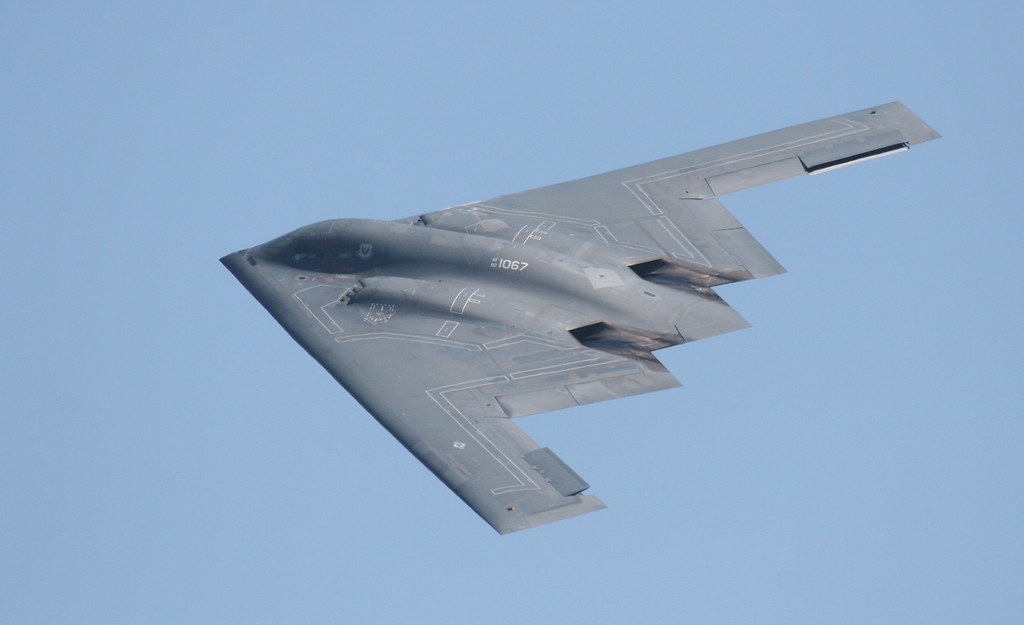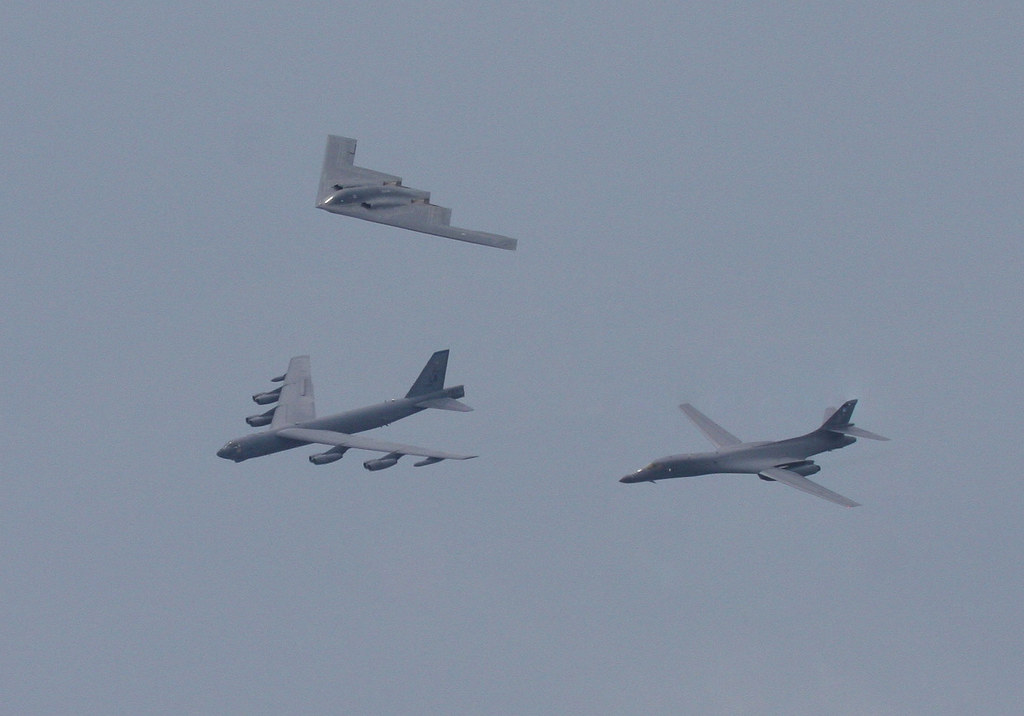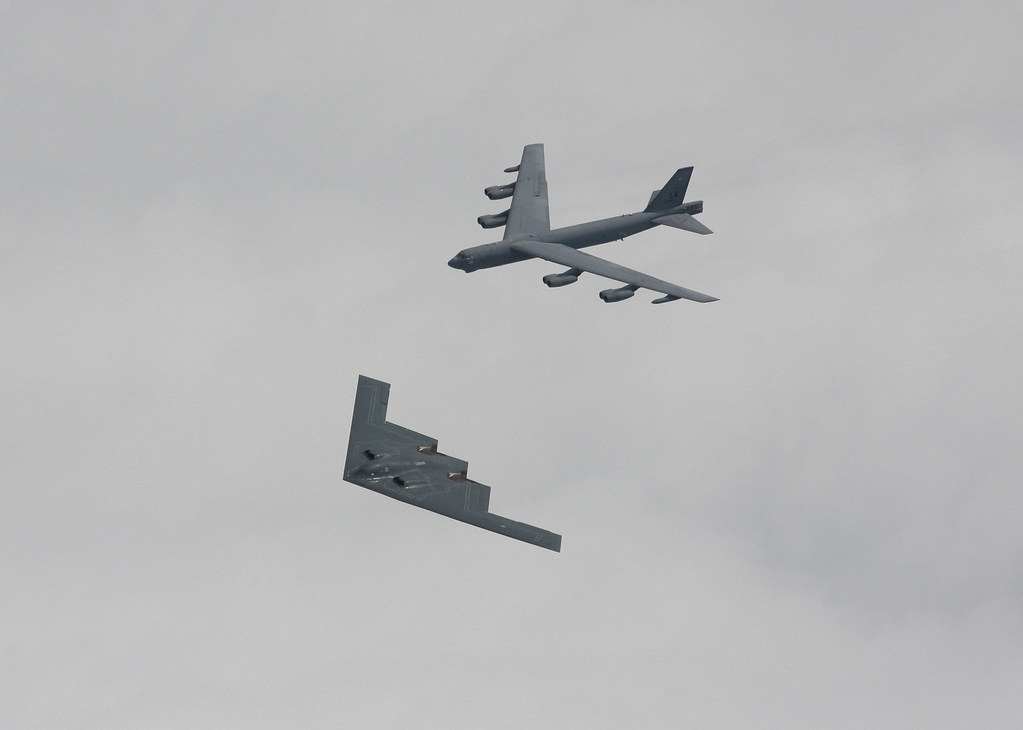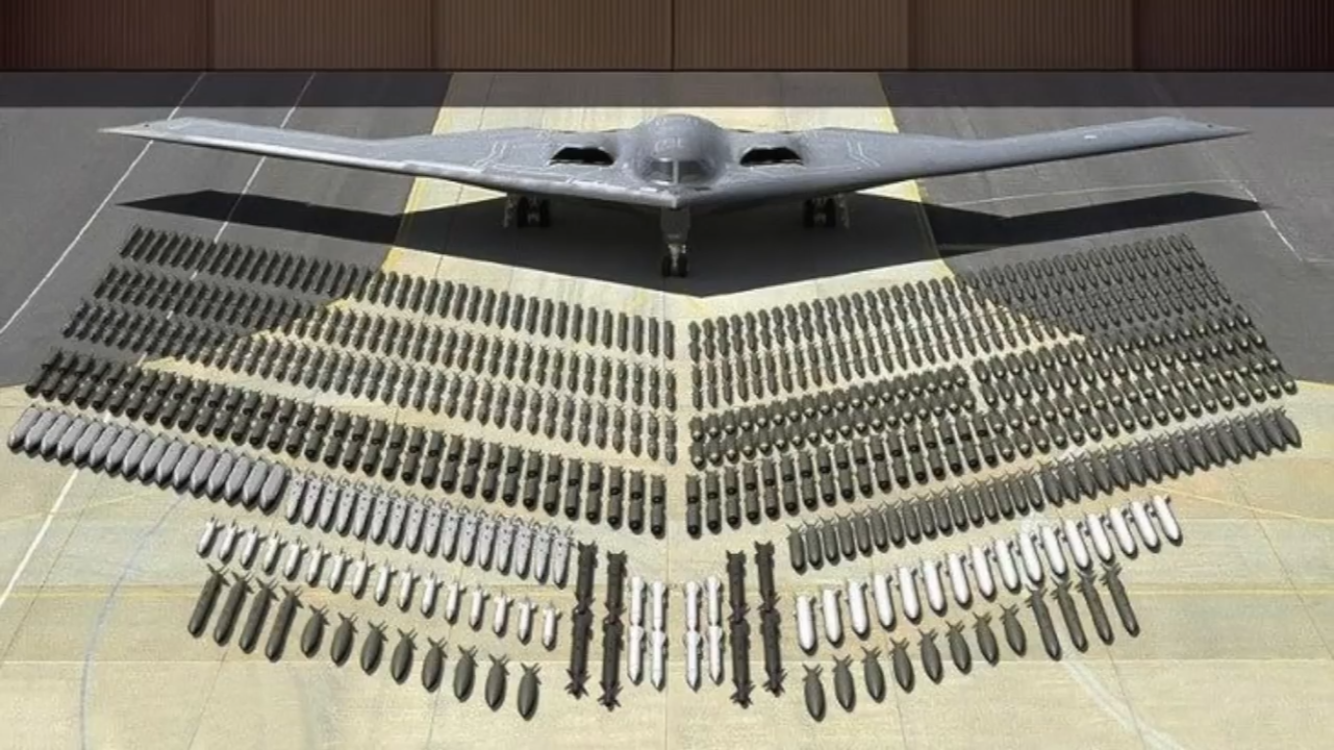
Invisible and silent yet always prepared to unleash powerful armaments, the Northrop Grumman B-2 Spirit holds the distinction of being the United States’ leading stealth bomber.

With its inception rooted in Cold War necessity and its maiden flight on July 17, 1989, the B-2 has since proven to be an asset of unprecedented strategic capability.

The jet’s remarkable history is a tale of technological triumph, operational prowess, and the challenges that accompany pioneering advancements in military aviation.

The B-2 Spirit represents a dramatic leap forward in aviation technology. As a multi-role bomber, it carries the capability to deliver both conventional and nuclear munitions.

Its defining characteristic is its stealth, a product of revolutionary design and materials that allow it to penetrate sophisticated defenses and engage high-value targets with low observability.

The signatures that typically render aircraft vulnerable—such as infrared, acoustic, electromagnetic, visual, and radar—are greatly minimized in the B-2, making it an elusive prey for the most advanced defensive systems.

Powered by four General Electric F118-GE-100 engines, the B-2 boasts an impressive range of approximately 6,000 nautical miles unrefueled, a high subsonic speed, and a service ceiling of 50,000 feet. Its flying-wing design—a nod to Jack Northrop’s visionary work—is not only integral to its stealth but also contributes to its high aerodynamic efficiency.

The composite materials, special coatings, and sophisticated stability and control systems underscore the aircraft’s high-tech arsenal. Despite its complexity, the B-2 requires only two pilots, a testament to its advanced automation.

Initially displayed to the public on November 22, 1988, the B-2 underwent extensive testing at Edwards Air Force Base. It was on December 17, 1993, that the first B-2, christened “Spirit of Missouri,” was delivered to its operational home at Whiteman Air Force Base in Missouri. Maintenance and support operations for the B-2 are managed at Tinker Air Force Base in Oklahoma, reflecting the comprehensive network involved in its upkeep.

The B-2’s combat debut in Operation Allied Force over Serbia demonstrated its effectiveness, where it was credited with destroying 33 percent of Serbian targets in the early weeks of the campaign. Its long-range capabilities were showcased when it flew from Missouri to Afghanistan and back, without stopping, supporting Operation Enduring Freedom.

The B-2 again proved its mettle in the skies over Iraq during Operation Iraqi Freedom, flying both from Whiteman AFB and forward operating locations.

A marvel of modern engineering, the B-2 came with a hefty price tag of approximately $1.157 billion per aircraft (in fiscal 1998 constant dollars). Initially, the intention was to build 132 units, but with the end of the Cold War, production was scaled down to 21, including one experimental aircraft, with the chief role switching to conventional weapons delivery while retaining its nuclear capability.

The B-2 was not just a machine of war; it embodied the shift in strategic military thinking. In the post-Cold War era, the aircraft adapted from a symbol of nuclear deterrence to a versatile tool for conventional warfare. It stands as a testament to the advances in stealth technology and the changing landscape of global defense strategy.

The B-2 Spirit remains an integral component of the United States Air Force’s arsenal, now under the aegis of the Air Force Global Strike Command since February 1, 2009.

With unmatched capabilities and an imposing presence, the B-2 continues to bolster America’s defense posture, ensuring that if and when called upon, it can deliver decisive power anywhere in the world, remaining a silent guardian in the skies.
Relevant articles:
– B-2 Spirit, AF.mil
– B-2 | Stealth Technology, Long-Range Capability & Strategic Defense, Britannica
– B-2 Spirit, Military.com
– Everything You Need To Know About The Northrop Grumman B-2 Spirit, Simple Flying, Dec 8, 2023

